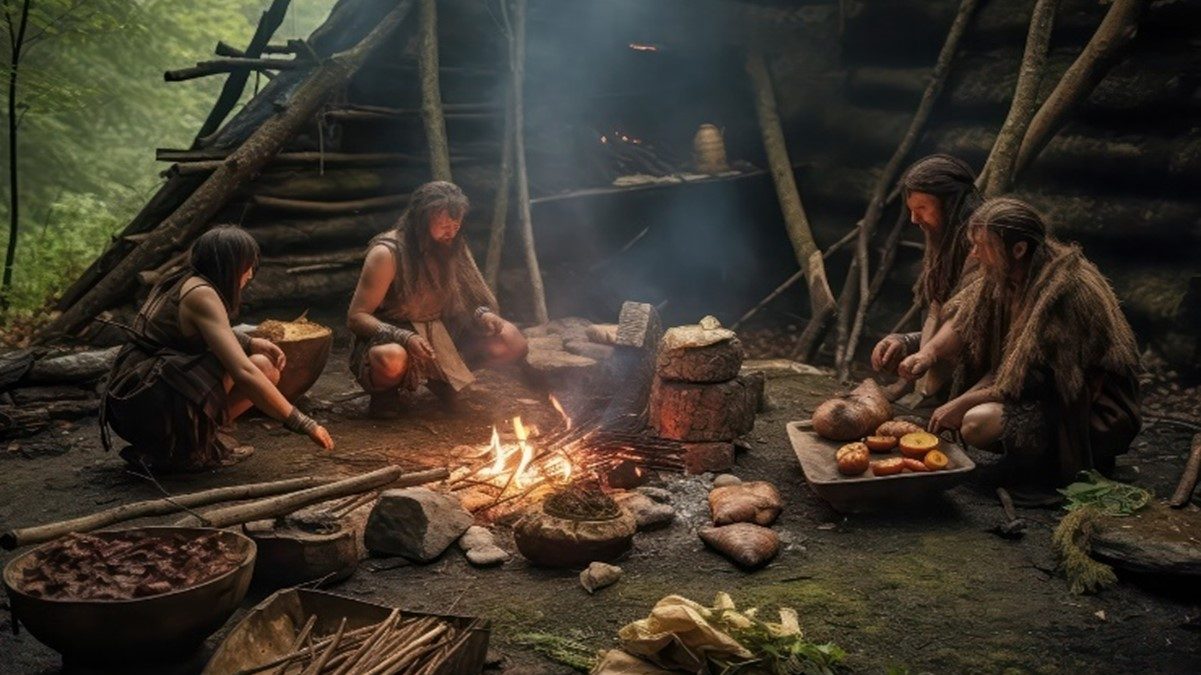A long time ago, like really long ago, humans didn’t stay in one place. They moved around, hunting animals and picking food from plants. But then, about 10,000 years ago, they decided to stick around in one spot. They began growing their food, like wheat and veggies, and raising animals like cows and sheep. This change made life more stable because they didn’t have to keep searching for food all the time. They built houses and villages where they could stay for good. This settling down brought big changes. People got jobs like farming, making tools, and trading stuff with other settled groups. It also helped them learn new stuff like making pottery and writing.

The transition to settled living was closely tied to the development of agriculture, with the help of tools other kinds of ornaments, and weapons things became easier for the people which allowed humans to cultivate crops and raise animals for food, rather than relying solely on hunting and gathering. The domestication of plants such as wheat, barley, rice, and maize provided a stable food source, and other green types of plants provided a nutritious diet for humans also that could sustain larger populations year-round. Similarly, the domestication of animals such as cattle, sheep, goats, and pigs provided additional sources of food, we conclude this in the veg category, people were also hunting the animals for their and also for good for the body for survival as well as labor for farming and transportation. The earliest technology developed by humans was stone tools. By chipping away at rocks to make shapes, humans were able to create the earliest axes, hammers, knives, and arrowheads. This marks the beginning of the Stone Age.
Favorable Climatic Conditions for Humans
People like to live in the most favorable climatic conditions places, like plain areas, with good fertile land, etc. As communities began to settle in one place, they constructed permanent dwellings such as mud-brick houses, stone huts, and wooden structures. People settled over the years in their favorable places to engage in cultivation fields, also living near the farms saved time for the farmers. These early settlements often clustered around fertile land, water sources, and favorable environmental conditions, facilitating agricultural production and trade. Also, people were engaging more in these activities and started work in trading across different countries, goods were transported by land and sea.
Technology and Innovation that makes Human Life Easier and Fast
The development of settled communities also led to advancements in technology and innovation. The need to store and process agricultural surpluses spurred the invention of pottery, tools, and storage facilities. With the help of technologies and different types of innovations people were producing more and more and also Over time, settled societies developed writing systems, mathematics, and other forms of knowledge that facilitated communication. Also, with the evolution of humans, people became more intelligent and started understanding the new world.
The process of human settlement continued to evolve over subsequent millennia, leading to the development of urban centers, civilizations, and empires. The rise of cities such as Mesopotamia, Egypt, the Indus Valley, and China marked new milestones in human history, these countries built enormous changes in human society and economic, and technological exchange.
Of course, settling down came with its challenges, like diseases and problems with the environment. Human settlement might be not easy because of weather conditions, disasters, famine, floods, drought, etc. This is the rule of Mother Nature if we want to live peacefully, we have to understand the principles and rules of nature. But overall, it helped humans to build communities, develop cultures, and shape the world we live in today.
ARTICLE BY – PINAL LIMBACHIYA | EDITED BY – SAHIL HARVANI



